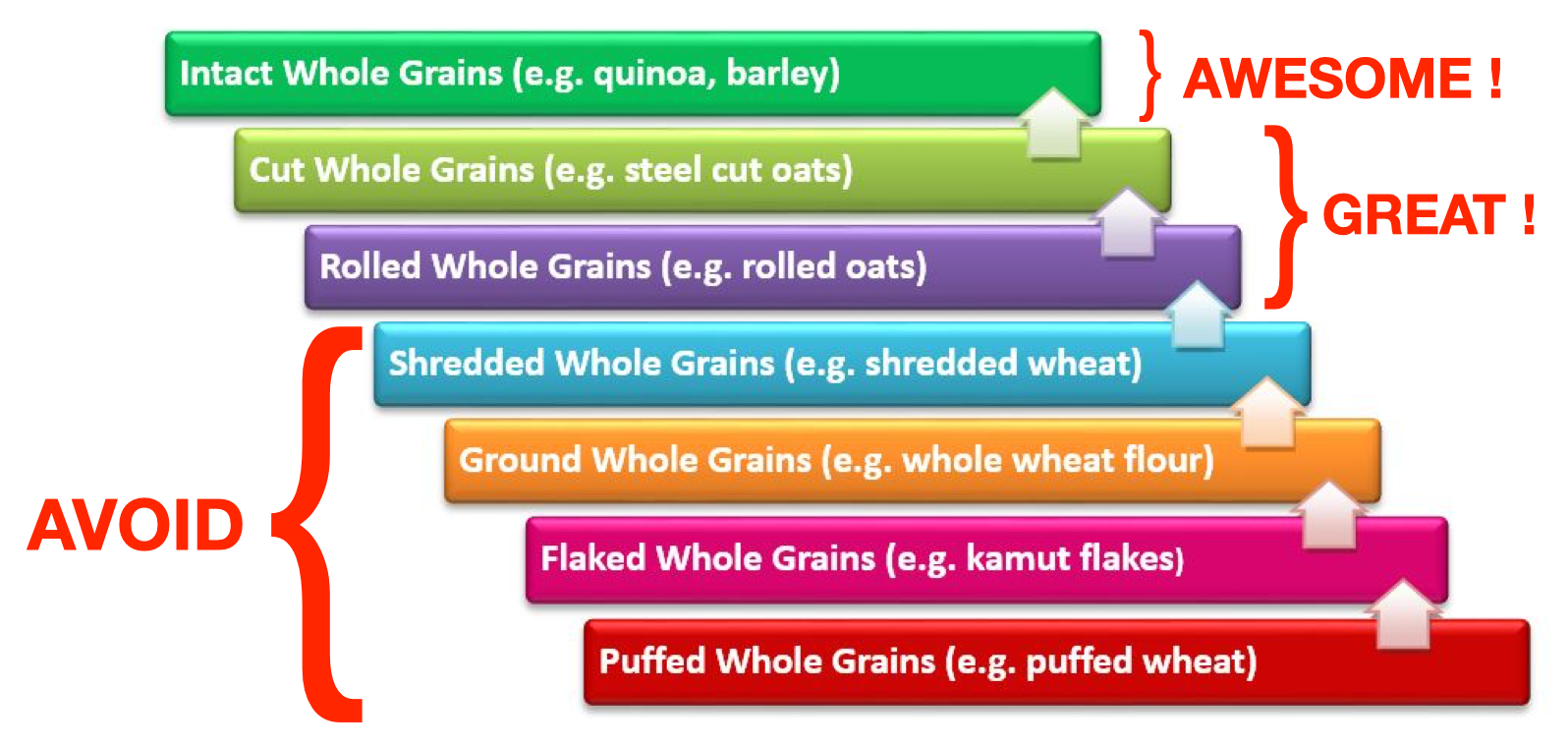Culinary perspective: By breaking the grain into smaller pieces, we increase the surface area of grain particles and decrease their diameter. Overall, cooking times are shortened. We also get improved flavor and texture.
Nutrition perspective: Broken grains have slightly higher glycemic index than intact whole grains. The increase is considered acceptable by Brenda Davis in her Whole Grain Hierarchy video which is summarized in the infographic below:

(Image derived from Whole Grains by Brenda Davis) At offset 10:31 in the Whole Grain Hierarchy video by Brenda Davis, she divides grains into 3 categories which may be called 'awesome!', 'great' and 'avoid' categories.
Brenda Davis explains the best way to consume grains is in the form of 'intact whole grains' (soak + sprout, or soak + boil). Jump to offset 10:31 in the video to see her classification into 'what to eat' and 'what to avoid'. Broken whole grains are marginally worse than 'intact whole grains'. Brenda Davis says that broken whole grains are perfectly fine!
Soaking? Many people skip the soaking step because the reduction in cooking time for broken grains is not significant. However, soaking reduces phytic acid (phytates), which boosts mineral absorption (zinc and iron, for example).
Hand pounded rice is produced by traditional pounding techniques (see video below).
Is hand-pounded rice healthy? Nutrition-wise, hand pounded rice lies between brown rice and white rice. This article explains. This video compares hand-pounded rice produced by traditional processes and modern machines.
Is 'hand pounded rice' really hand pounded? In the modern world, "hand pounded" rice is often produced by machines that mimic the labor intensive process of pounding rice manually as shown in the video below.
The word 'cornmeal' refers to any ground, dried corn! Which Cornmeal is Which (published in Issue 49 of Fine Cooking, 2002) is a fantastic article that explains various types of cornmeal! Brief summary of this article: Cornmeal may be 'whole grain' or 'refined' (degerminated). It may be coarsely ground or finely ground. Coarsely ground, whole-grain cornmeal is used in traditional recipes like polenta and grits. Finely ground, whole-grain cornmeal is called 'masa harina', which is used to prepare whole grain tortillas, also a traditional recipe.
Is cornmeal healthy? In her video Whole Grain Hierarchy, Brenda Davis loves 'intact whole grains' (which may be soaked + sprouted, or soaked + boiled). She's okay with 'broken whole grains' and 'rolled whole grains' also — they are fine! Jump to offset 10:31 in the video to see her classification into 'what to eat' and 'what to avoid'. For weight loss and diabetes, she encourages us to avoid 'ground whole grains (flours)'.
Coarsely ground, whole grain cornmeal used in polenta and grits is more like a 'broken whole grain'. Using Brenda Davis classification, such cornmeal is great! But finely ground, whole-grain cornmeal ('masa harina') is more like a 'ground whole grain' (flours). Using Brenda Davis classification, such cornmeal should be avoided by those pursuing weight loss or tackling diabetes. Finally, finely-ground, degerminated cornmeal (refined corn, not whole grain) should be avoided. Such cornmeal is typically used for baking.

 Instagram
Instagram YouTube
YouTube